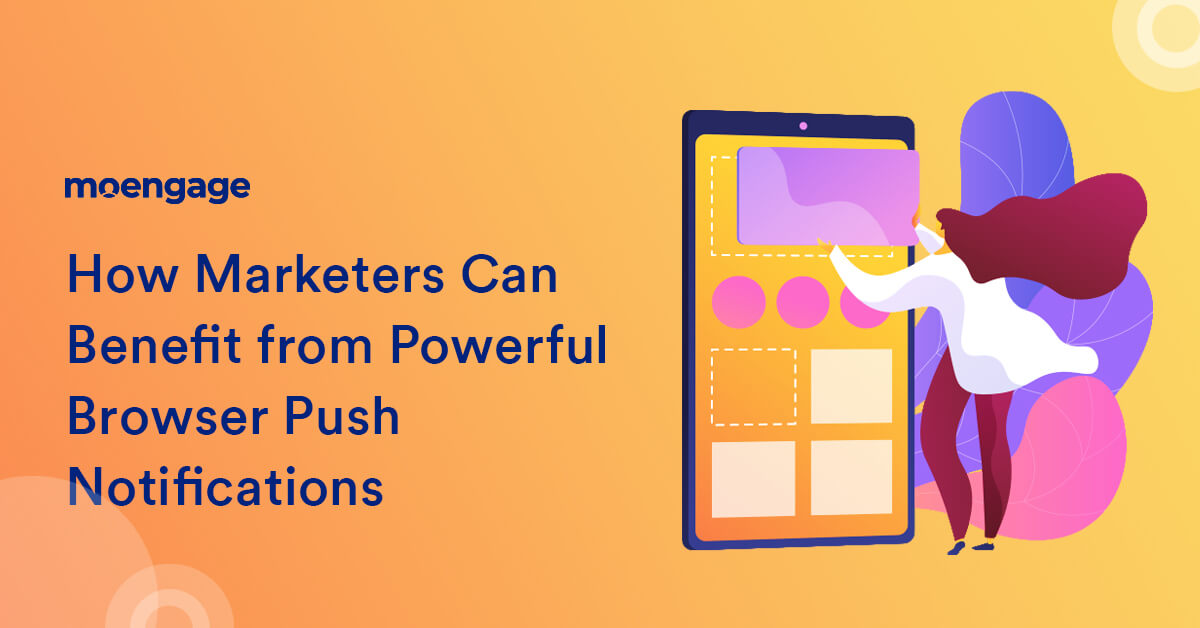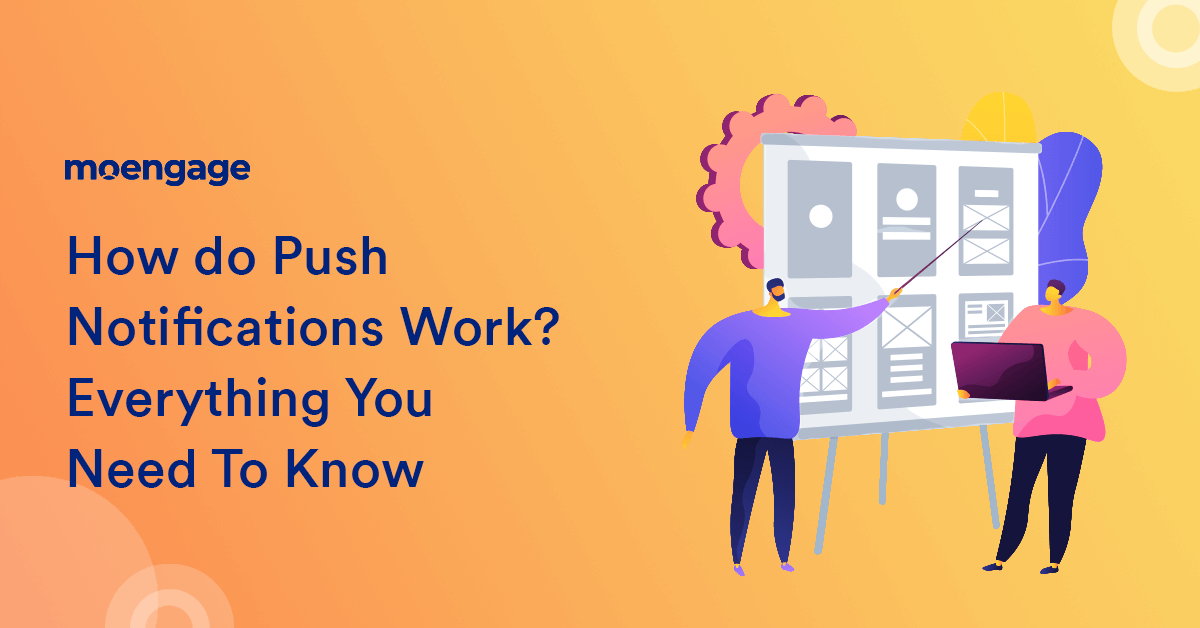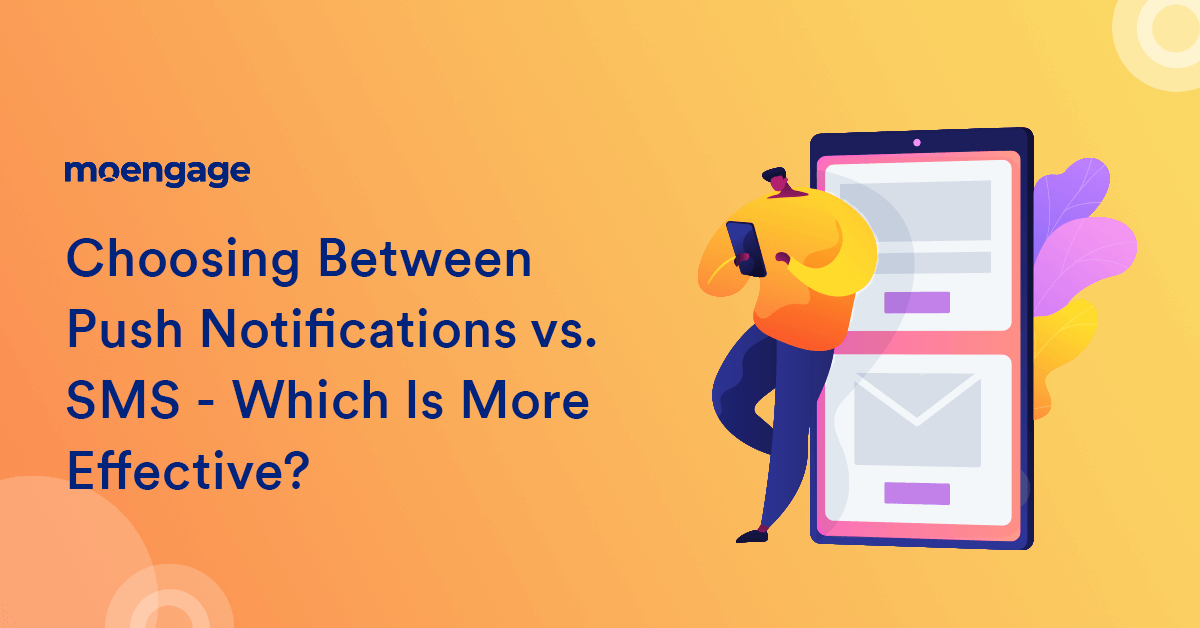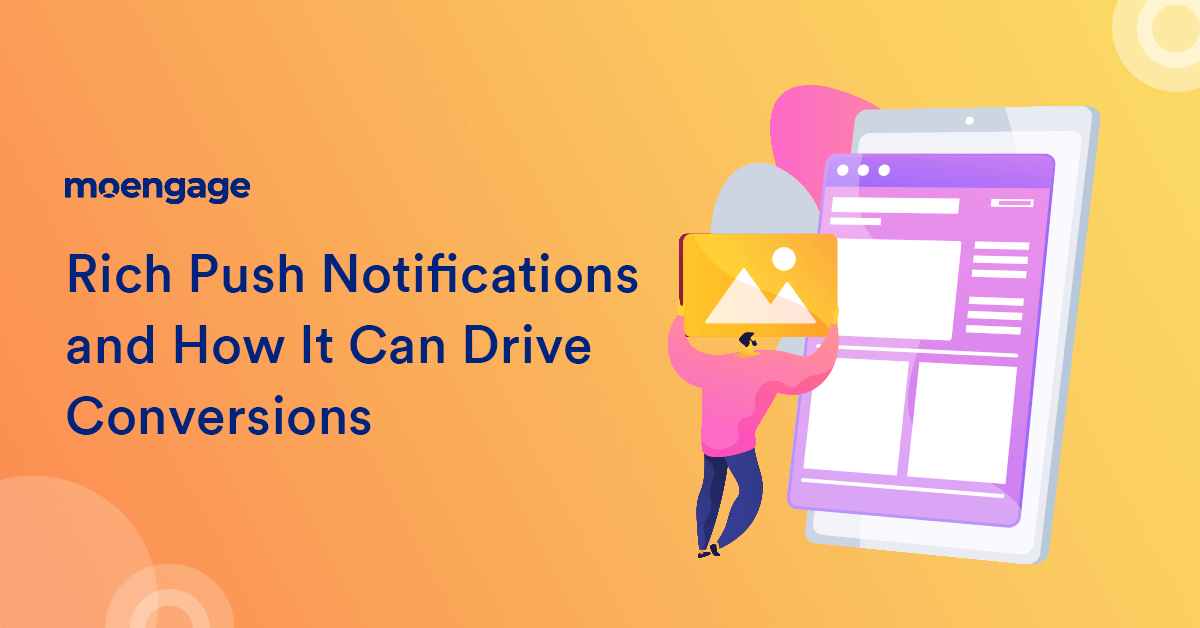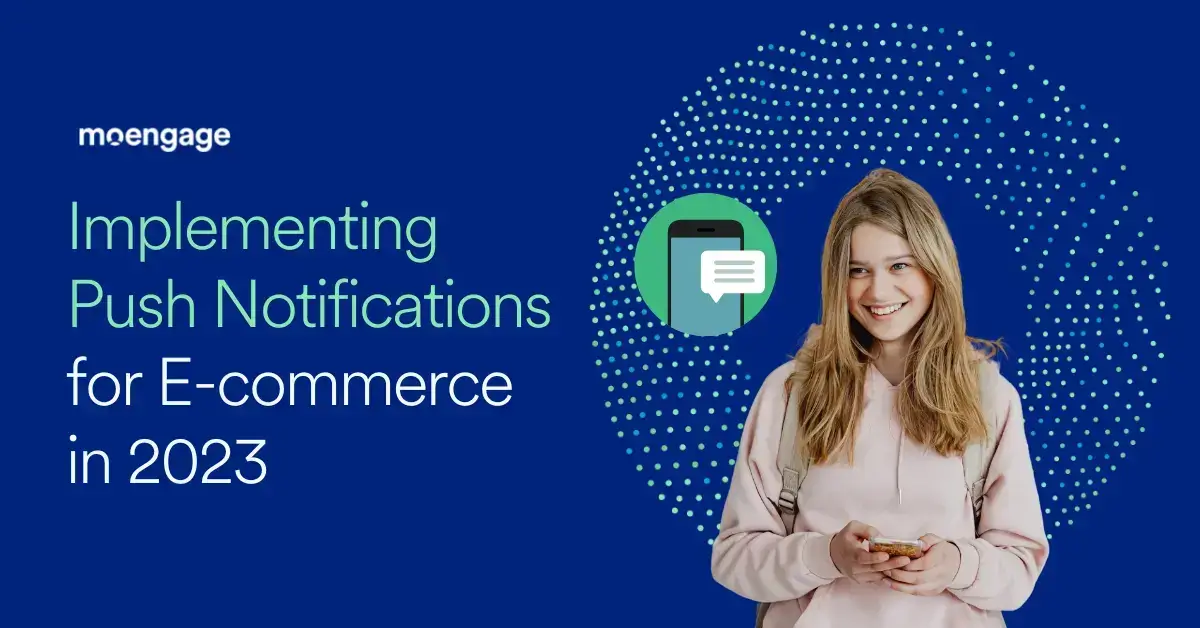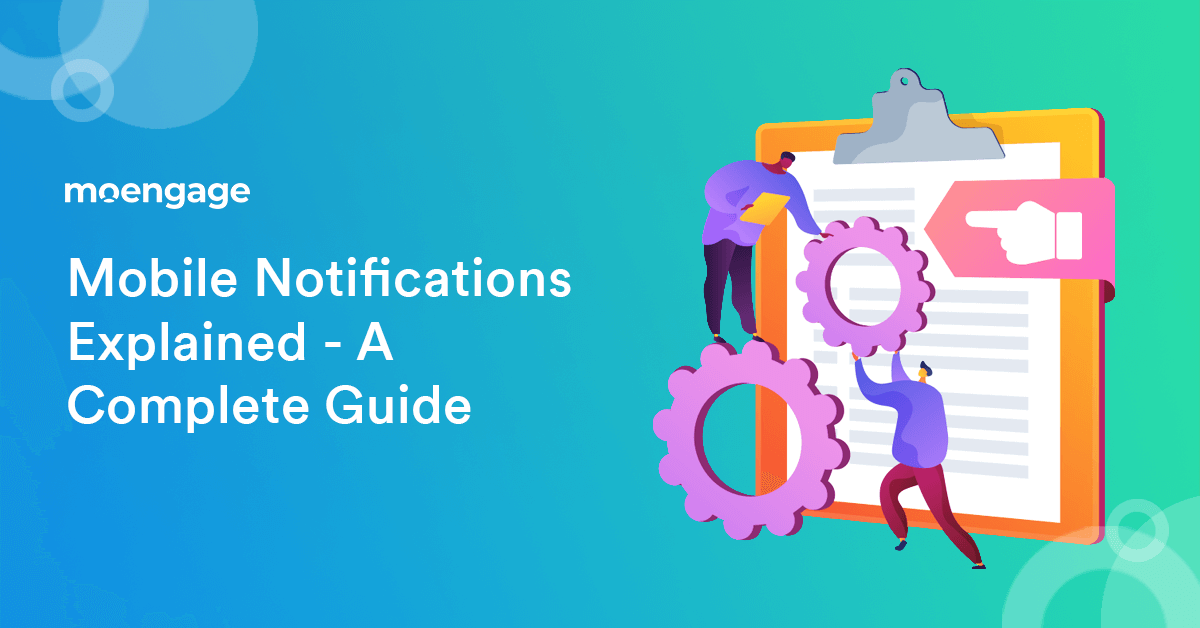21 Critical Push Notification Statistics for 2023
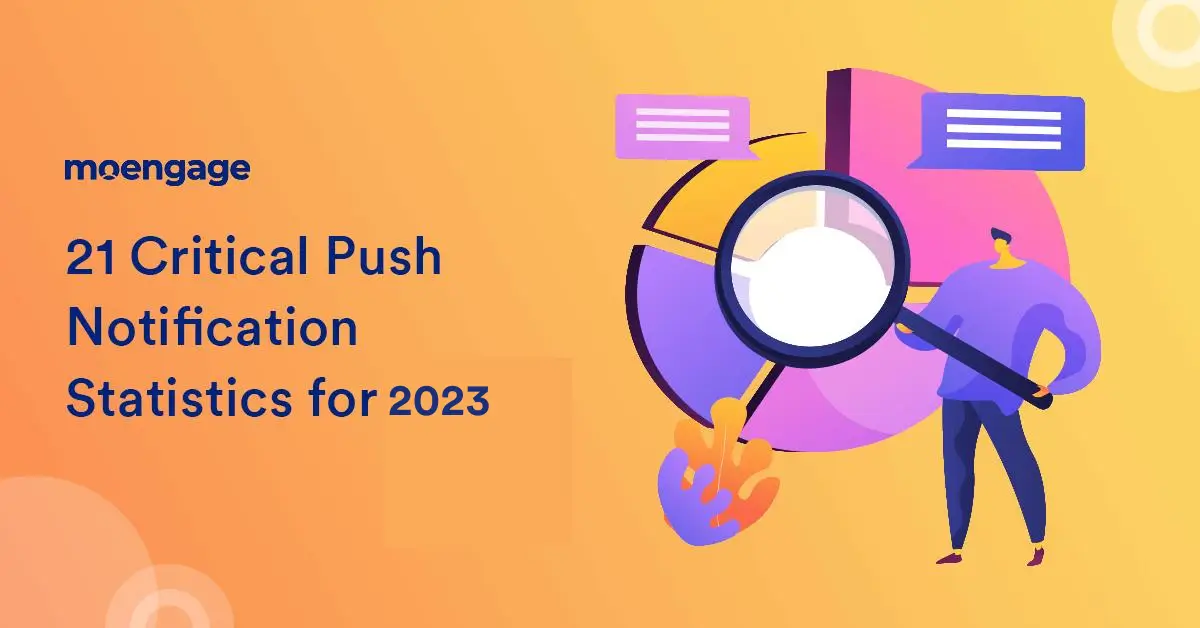
Push notifications have carved a niche for themselves in mobile marketing strategies and solidified their standing. And even though the growth of this communication channel has been spectacular, it has not been overnight. The transition was gradual and continuous in the past few years. In this article, we will look at some pressing push notification statistics for 2023, which can act as a baseline to chart the growth of push notifications since 2019. The following is a compendium of everything you need to know about sending push notifications and their associated trends.
Critical Push Notification Statistics for 2023
Push notifications have become an integral part of a marketer’s arsenal in recent times. Here are 21 interesting push notification statistics and facts that you need to know:
1. The subscription rate of push notifications ranges from 0.5% to 15%, depending on the device and industry. Presently, the financial sector enjoys the highest opt-in rate.
2. While you can run push campaigns on mobile and desktop devices, the former sees a higher percentage of subscriptions (~60%), while the latter registers subscriptions at 30%. Tablet users constitute the remaining 10%.
3. Sending push notifications increases app retention rates by 3 to 10 times.
4. Google Chrome is the most popular browser associated with web push notifications as it accounts for a whopping 90% of push notification subscribers. For mobile push notifications, Android devices outperform iOS ones in terms of click rate and subscription rate (91.1% for Android vs. 43.9% for iOS).
5. Single opt-in has increased sign-up rates by almost 600%.
6. A single push notification to new subscribers during the first week since app installation can boost retention rates by 71% over two months.
7. On average, the click rate of web push notifications stands at 12%, which can be improved to 15% through push notification automation. Sending push notifications with rich media improves this number to 18%.
8. Running highly targeted push notification campaigns sees a click rate as high as 30%!
9. Cart abandonment push notifications enjoy a click rate of 16%, while re-engagement mobile marketing strategies that use push notifications see a CTR of 13%. Recently-viewed push notification campaigns also fetch a CTR of 13%.
10. The click rate is observed to be at the highest during the period between afternoon until 6 pm in the evening. Wednesdays and weekends are the preferable days for boosting opening rates.
11. July and December witness the highest subscription rates in a year.
12. The perfect day and time for sending push notifications vary from industry to industry. Typically, eCommerce will get the best responses between 3 to 4 pm on Wednesdays, media, and publishing derive the best results between 9 to 10 am on Tuesdays, BFSI on Tuesdays between 3 to 5 pm, whereas digital marketing agencies will see the best results between 2 to 7 pm on Tuesdays.
13. Adding actionable CTAs can boost push notification campaign outcomes by 40+%.
14. The eCommerce sector occupies the largest share of sending push notifications amongst all industries (22.03%). It is closely followed by media, blog posts, and publishing (18.79%).
15. Push notifications can deliver an ROI as high as 3500%!
16. The highest push notification delivery rate stood at over 80%, which was for users who had been active in the last 24 hours.
17. Push notifications appear to be outweighing email marketing by delivering better results. When compared, push notification campaigns to observe opening rates increase by 50%, click rate by 7 times, and retention rates by 93%.
18. 70% of app users find push notifications to be extremely useful, and for this reason, 53% of these users are willing to share details, such as their location.
19. Promotions (34%) are the most-desired push notification content, while new developments and geo-localized content tie at second with 26% each.
20. App users who subscribe to push notifications result in a doubling of retention rates, with the app engagement rate touching 88%.
21. Push notification opening rate can be improved by using emojis (20%), industry-specific send times (40%), rich formats (25%), personalization (4x), and advanced targeting (3x).
2020: State of the Push Notifications Statistics
Even though 2020 was a year of disruptions, it offered an immense opportunity for mobile marketing through push notifications. Here are some push notification statistics observed in 2020:
1. The average click rate for push notifications stood at 2.25%. The opening rate for retail (2.97%), utilities (2.72%), and BFSI (2.55%) were the highest, while food (1.36%), media (1.31%), and deals (1.22%) were the low scorers.
2. The best time for sending push notifications was 12 to 1 pm and 7 to 8 pm. The corresponding delivery rate of the push notifications was 60%, while night or early morning saw a delivery rate of 35%.
Bonus Material – 9 Factors That Can Help Improve Push Notification Delivery Rate
3. In 2020, about 80% of push notification subscribers were mobile app users, while the remaining 20% were desktop users.
4. App users prefer to receive push notifications when they are free and relaxing. As such, they welcome such messages in the mornings or evenings after work, and mostly during the weekends.
5. Interestingly, only 23% of push notifications were sent on the weekend, while the remaining 77% were sent during the week.
6. Push reaction rates were highest on Tuesdays (8.4%), with travel (11.3%), finance (9.8%), and eCommerce (7.9%) the leading contributors.
7. As a leading push notification sender, the eCommerce industry primarily uses the push notification communication channel for announcing offers and discounts (83.33%). Announcing new products and sharing time-bound information are close second and third, respectively.
8. App users are more willing to receive push notifications from social media platforms such as Facebook, LinkedIn, Instagram, Twitter, etc. Following this, the engagement rate for news and media publishing and shopping and retail apps and websites enjoyed great popularity.
9. A/B testing while sending push notifications can boost the opening rate by 56%.
10. App users show retention rates as high as 190% when they receive one or more push notifications within the first 90 days of using the app.
11. The ideal message length varies depending on the sector. While media and publishing notifications can send messages over 180 characters, businesses like education, health, business, BSFI, retail, blog posts, and retail should curtail it between the 101-120 range.
12. The use of emojis boosts CTR by 9.6%. Popular emojis include fire, blue heart, pizza, thumbs up, and hourglass.
13. Customers want more granular personalization of their push notifications as name-based personalization no longer makes the cut. In fact, simple personalization has less than a 1% impact on the engagement rates.
14. Exclusive, time-sensitive, and personalized power words like apply, discount, ending, today, don’t miss, hurry, get free, special, etc., improve push notification opening rate.
15. About 30% of app users delete an app if they receive excessive advertisements and notifications.
16. The frequency of push notifications is inversely proportional to their opening rate. Businesses must not send anything more than five push notifications in a day, which too is subject to the nature of your industry. For instance, two push notifications in a day are the peak for industries like eCommerce and blog posts, media, and publishing.
17. In 2020, Friday was the most popular day for sending push notifications while Sunday was the least popular day.
18. The ROI of push notifications was as high as 2200%! Other benefits include a bump in CTR by 30% and an increase in website traffic by 25%.
19. The opt-in rate ranged from 0.5% to 10.5%, depending on the industry, with financial services delivering higher opt-in rates.
20. Even in 2020, Google Chrome was the leading browser with a push notification subscriber share of 93%. Similarly, Android devices also enjoyed a stable subscriber base that was almost twice that of iOS devices.
21. Push notification campaigns that included CTA buttons delivered 40 to 60% better results.
A 2019 Overview of Push Notification Statistics
The year 2019 continued the upward-swinging momentum generated by push notifications in the years preceding it. Following are some noticeable push notification statistics that defined 2019:
1. Mobile marketing campaigns that are targeted through customer segmentation register 50% higher CTR. It also boosts the retention rate by 39%.
2. The average opt-in rate across Android and iOS devices ranged at 67.5%. Android users (at 60%) showed more willingness to receive push notifications when compared to their iOS counterparts (at 45%).
3. The engagement rate also varied depending on the device, with Android enjoying a CTR of 4.06% against 1.7% of iOS devices.
4. While the push notification subscription base does not vary significantly amongst continents, Africa (45.2% for iOS devices) and South America (93.8% for Android devices) saw the highest opt-in rates, while North America and Oceania stood at 42.8% and 89.4%, respectively.
5. The use of A/B testing improved the click-through rate by 10%.
6. The benchmark opening rates were 5.46% for business and finance, 5.04% for entertainment, and 4.59% for deals and coupons.
7. Open rates increased by 9% when senders incorporated images in their push notifications.
8. Push notifications bearing emojis see an increase in click rates by 70%. The popular emojis of the time were the heart-eye, fire, confetti, and gift box.
9. The power words prevalent during the period included words like discount, handpicked, offer, awesome, remind, sale, hassle-free, and more.
10. Engage rates were high for push campaigns deployed between 7 to 8 a.m. and 10 a.m. to 2 p.m. Interestingly, there was a notable spike in phone usage and activities between 12 to 1 a.m., as night owls used their phones. However, it only makes sense to not send any push notifications at such off hours.
11. The use of data tags while sending push notifications increases the click rate by 16% when compared to businesses that do not use data tags for user differentiation.
12. Basic personalization increased the opening rate by 9.06%, while greater personalization delivers even better results. 61% of app users were open to push messages if they were related to their preferences.
13. The ideal push message length was remarkably low in 2019, with entertainment, health and fitness, and travel and hospitality allowing 90 characters. On the other hand, deals and coupons restricted themselves to 20 characters.
14. The number of weekly push notifications that could lead to push disablement stood at 43% for 2-5 push notifications per week. Push disablement was seen more prominently (at 57%) amongst subscribers within the 60+ age demographics. In contrast, younger app users were more open to push notifications with lower push disablement rates at 31%.
15. 92% of app users will not discontinue the use of the app, while 87% will not disable push notifications if they receive a single push notification per week.
16. Push notification reaction rates averaged at 7.8%, with Android device users offering higher reaction rates (10.7%).
17. While rich media in push notifications has been quite in demand with their opening rate of 56%, only 8% of marketers were utilizing it for their benefit. Industries like BFSI, media, blog posts, publishing, and SaaS saw marked improvement in click rates after including big images in push notifications.
18. About 18% of app users considered push notifications to be useful. However, there existed a positive sentiment towards the channel as 50% of users were willing to receive them as long as they did by choice.
19. Sending a combination of dynamic and segmented push notifications improved engagement rates by 6.49%. Similarly, the corresponding opening rate was at 8.8%. Industries like media, blog posts, publishing, BFSI, and digital marketing agencies drew maximum benefit from this combination.
20. Geotargeting improved the opening rate and conversion rate from 4.2% and 1.5% to 7.9% and 3.8%, respectively.
21. About 6% of app users are likely to abandon the app after receiving one push notification per week. This effectively translates to the fact that about 94% of subscribers do not mind receiving at least one push notification per week.
Final Thoughts
As we can see from above, the push notification statistics have been fairly consistent. If anything, they point towards sustained growth, which consolidates the role of push notification campaigns in mobile marketing. Mobile marketers must view push notifications as a thriving opportunity and capitalize upon them before they get saturated. Before it turns mainstream, now is a great time to learn all about push notifications and how to improve push notification performance!
